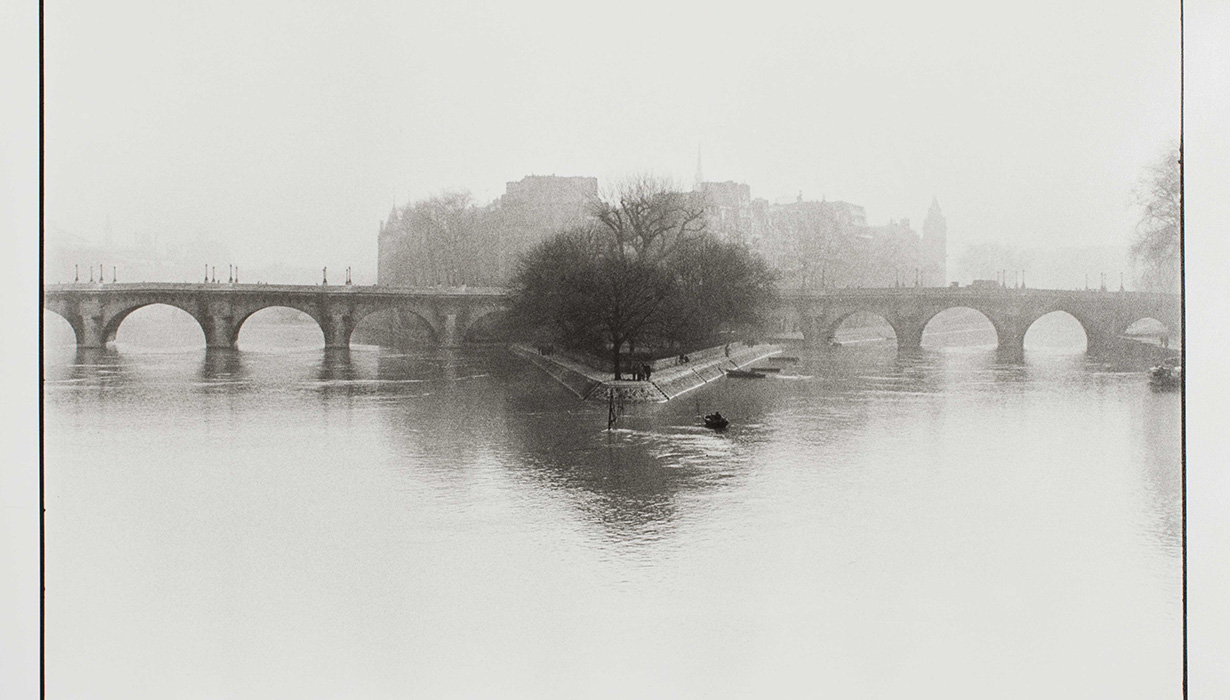
In Focus: Henri Cartier-Bresson
The Île de la Cité is in every way the heart of Paris, an island in the Seine where two exquisite medieval churches, Notre Dame and Saint-Chapelle, and a notorious prison, the Conciergerie where Marie Antoinette awaited the guillotine, sit atop soil once occupied by the Gallic Parisii tribe that gave the city its name.
To stand at the western tip of the island—as does the small huddle of people at the center of this photograph—where the forked waters of the river reunite, is to stand at the intersection of the cultural, historical, and geological forces that have shaped the city.
It was just these types of intersections that Henri Cartier-Bresson stalked with this camera, spending four decades traveling the world to witness wars, deaths, coronations, and regime changes. But most frequently he found his ideal subject by observing ordinary human transactions, in settings made extraordinary by his ability to perfectly position his lens—at a precise point in time and space when a sublime configuration of form and light would be animated by an equally sublime, though always fleeting, moment of organic motion.
His early training as a painter had led him to an obsession with the formal geometry of Renaissance painting and an affinity for the spontaneity and absurdity of Surrealism. It is this last quality that is the least acknowledged in his work, though he clearly understood and exploited the unnatural, often otherworldly way in which the camera fixes a point in space and freezes a moment in time. He amplified the innate surreality of the camera’s trickery by composing his scenes with a “rigorous geometrical organization” so exacting and visually arresting it made him a cult figure.
This geometry is on view in île de la Cité, Paris, though in place of the eye-twister Golden Section one sees instead a classic and pleasing symmetry, as the two halves of the Pont Neuf meet in the center of the frame. The composition may seem placid, even static, in comparison to Cartiet-Bresson’s more well-known images of speeding bicyclists or leading pedestrians—until one realizes that the waters of the Seine, one of the world’s most storied waterways, are rushing toward the camers, toward the viewer, moving forward and outward, ceaseless and unstoppable, like time itself.